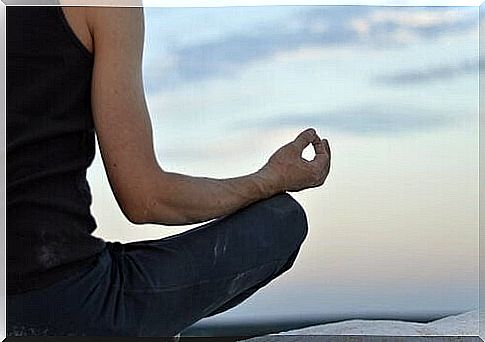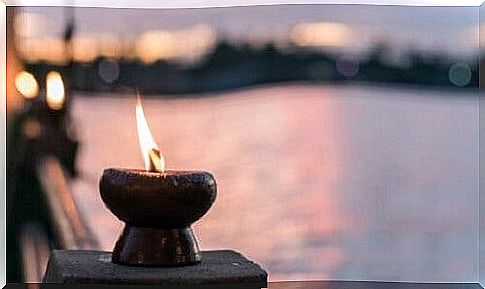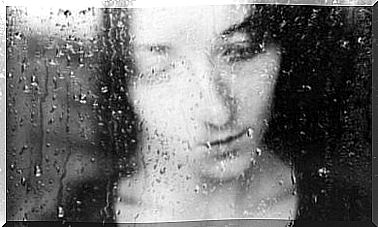What Are The Benefits Of 10 Days In Quiet Seclusion?

I can write dozens of articles on the benefits of 10 days in quiet seclusion. I could talk for hours about the benefits a spiritual retreat can bring you. There are many things I can say…but I will mention just a few.
What I will only tell you are the benefits that I can share with you. After all, most positive effects are personal and individual. They are so profound and indescribable. So it doesn’t matter how many words I write here. It is still impossible to convey the benefits.
When I finished my first 7 day retreat two years ago, the first thing I wanted to do was talk about it. It was then, however, that I realized that not everyone is ready to understand what a transformative experience it can be. Since then I don’t talk about it much unless someone asks me.
When I returned from my last retreat, this was actually one of the first things anyone said to me. “Ten days without talking to anyone and without using your cell phone?” “Yes,” I replied. Here’s what she replied: “You really are crazy.”
What is a retreat?
A retreat is basically a break from life. It may sound bleak to put it that way. So let me explain it in a better way.
In our daily lives, we encounter situations that make us angry. We also have to deal with people who irritate us. In addition, we face situations that make us sad.
In summary, it means that we are constantly confronted with situations that cause discomfort. On the other hand, we are also victims of attachment. In extreme cases, these can classify as addictions.
So a retreat consists in temporarily withdrawing from whatever things cause us discomfort. The result is that you learn to be on your own.

The first moments
Since it was my third retreat, I already had some experience. However, the first moments were different. Moreover, this retreat also included the last thing I had to do to become a teacher of Buddhist meditation. So, of course, I felt a tremendous responsibility.
Life goes on between the retreats. We continue to collect experiences. When you enter the retreat center you know that you will be alone with your mind. It doesn’t matter that you are with other people. You will also not have a cell phone. You will therefore have no contact with the outside world.
In our daily life we should avoid our most annoying thoughts. We can’t bear to think about the things that cause us pain. This is why we resort to our cell phone or to all sorts of other distracting activities.
During a retreat in quiet seclusion you are alone. So you have to confront those fears, your mind and your thoughts on your own.
Meditation and thoughts in quiet seclusion
Meditation
It was a retreat in quiet seclusion at the end of a course to become a teacher of Tibetan meditation. So to practice, we meditated about 5 to 6 times a day. In addition, we could meditate individually as often as we wanted.
We also took part in lectures. This was our only auditory stimulus, the teacher’s words for several hours a day. The rest of the day passed in silence.
Meditating makes you aware of how many thoughts are crossing your mind over and over again. There are thoughts that you believed you had already overcome. Other thoughts are more recent. Some reside at the back of your mind.
You sit with your legs crossed and take a deep breath in and out. You let your thoughts invade your mind. Without judging those thoughts you perceive them. When you finish the meditation, however, those thoughts return.
Thoughts
We believe that we have certain thoughts under control. However, those thoughts are starting to resurface. They erupt like lava from a volcano, completely uncontrolled. When a tip of a thought appears, we try to make it disappear in our daily lives by retreating to the Internet.
During a retreat of quiet seclusion, not only the tip of the iceberg comes to the surface. After all, everything comes out. Little by little you become aware of its size: it is huge! You then realize that many thoughts are like the iceberg that sank the Titanic.
On the outside, you may think they don’t really touch you. However, they hurt you in a hidden way. They also crush your confidence. Congrats! You begin to confront your demons!

Withdrawal Symptoms
That is also the reason that the participants often have certain experiences even though they can also feel blessed. After all, what often happens is that people exhibit anxiety attacks, persistent trembling, sweating, crying, palpitations and hyperventilation.
I don’t mean to scare you with this. However, it is important that you know everything that happens when we confront our mind. This just shows how much of ourselves we hide. Then when we have to confront ourselves, we don’t know where to start.
In a way we can explain this fear as a syndrome of withdrawal from everyday life. We are used to a certain routine. We go from one place to the next.
However, in a quiet seclusion retreat center, you have to follow a schedule. You don’t have access to your phone or a computer. You can’t leave your room in the middle of the night to get an ice cream from the fridge.
What are the benefits of 10 days in quiet seclusion?
The funny thing is that you don’t start to feel the benefits of a quiet retreat until you return to your daily life. While you are in the retreat center you will feel peaceful and serene.
When you return to your normal life, you also realize that your mind is much calmer. You don’t have to talk either. Plus, you don’t need so many external stimuli to be happy. After all, you are satisfied with yourself.
You leave the retreat center. On the way home, all the noise from your environment begins to overtake you. Cars, people talking and yelling… You begin to become aware of all the excessive noise that surrounds you.
This is why most people are always stressed. It also happens on an almost unconscious level. So the people who live alone have an advantage. However, when you live with more people at home, things are different.
One person watches television. Someone else is on his computer. Another uses his cell phone. Almost every one of them does something that actually contributes nothing to their lives.
The content of conversations
Then when you start interacting with other people again, you realize that a lot of our conversations are purely social. They really just serve to fill in gaps.
Those conversations don’t contribute anything important. They don’t enrich you either. After ten intense days devoted to inner growth, you become aware of the exaggerated amount of information that comes from talking.
As a result, you learn to appreciate the simple things that really add value to your life. When you visit a mall, you only see consumerism and materialism. You open your eyes.
You also come to realize that since childhood you have been taught to look for happiness outside of yourself. Even though we actually find happiness within ourselves, we have not been taught how to develop it.
The phases of the cave, the valley and the cemetery
After a retreat in quiet seclusion, it is difficult to return to normal life. Many people become obsessed and just want to talk about what helps them grow.
However, it is best to try to achieve a balance. Don’t leave your friends and family out of it. However, also make sure not to put your meditation practices aside.
Rinchen Gyaltsen led the training course in meditation. He always spoke of the three stages of the spiritual path:
- The phase of the cave
- The phase of the valley
- The Graveyard Phase
The three phases
The first phase consists of withdrawing from anything that negatively affects you or causes attachment. In this phase you also prepare. It is a form of spiritual training.
When we think we’re ready, we go down into the valley. Here we deal with everyday life and see how far we have evolved.
The graveyard phase may seem old-fashioned. In India, it was customary to place rotting bodies in graveyards where people could see them. It was also said that if someone managed to meditate in a graveyard, he was ready for anything.
Fortunately, we don’t have to meditate in a graveyard these days. And when we do, there are no bodies to be seen. So we can move from the cave phase to the valley phase.
When people leave the retreat of quiet seclusion, many of them want everything to remain as quiet as it was in the ‘cave’. However, this is very difficult and often unrealistic. Hundreds of stimuli attack us every day. We are also faced with various situations and setbacks.
However, it is neither healthy nor wise to get carried away by the insane and highly materialistic vortex of the valley phase. So what is the best we can do? We must deal with our environment while keeping the calm and not putting aside our personal practices.

Recommendations for a retreat in quiet seclusion
First of all, it is recommended that you begin with a short guided retreat of 2 to 3 days in quiet seclusion. I have attended three silent retreats (7 days, 3 days and 10 days). All these retreats were supervised.
I immediately started a 7 day retreat in quiet seclusion. That changed my life. For some people, such a lengthy silent retreat can be exhausting.
On the other hand, it is important that you know which retreat center you will go to. So look for references. Try to meet people who have already been there. Also visit their website. See who the teachers are. This information will make you feel more comfortable and more confident.
Another important aspect is that you should know that not all retreats take place in silence. Many retreats also include meditation practices but do not require silence.
It is also important to know that you may feel anxious for a few days while doing a quiet retreat. This is something that happens very often.
If you don’t know how to handle your anxiety, it’s best to consult your teachers or counselors. They will give you guidelines to help you. The most important thing is that you have to remember that you should not be afraid of anything.
Final comments
Many people tell me that they would never go on a retreat in quiet seclusion. Still , I can absolutely recommend the experience. We spend a lot of money on grilling. Moreover, we invest a lot of time on empty assignments. So we also need to invest some time and money in something that is so beneficial for personal development.









